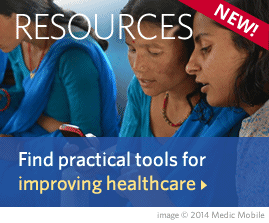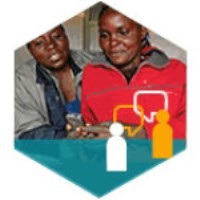
This self-paced course is one hour in length and will provide you with a practical process to improve your coaching skills. The course introduces OALFA – which stands for Observe, Ask, Listen, give Feedback, and Agree – a technique for coaching individuals to improve effectiveness.
Read More...
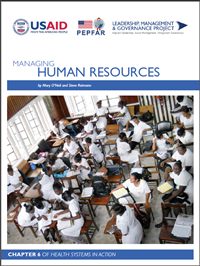
This publication shows that effective human resource management (HRM) is important in any public- or private-sector organization and essential when public health crises collide with workforce shortages. We present here the three pillars that together form the HRM capacity of an organization—policies, systems, and management and leadership practices—and describe how they can help you to attain your organization’s HRM goals.
Read More...
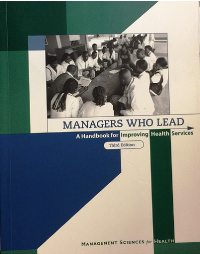
Managers Who Lead empowers health managers at all levels of an organization to lead teams to face challenges and achieve results. It answers questions such…
Read More...

In this publication we will review concepts, approaches, and tools that will help you bring about a change of perspective in designing and implementing policies and programs in health, specifically in relation to gender. The chapter explores the myths and realities regarding gender, the concept of gender mainstreaming and how to move towards this goal, discusses how to conduct a gender analysis and provides links to relevant tools, discusses gender integration into programming and the gender integration continuum, and offers insights into how to integrate gender considerations into the health system using the lens of the WHO health systems building blocks. (This publication is Chapter 4 of Health Systems in Action: An eHandbook for Leaders and Managers.)
Read More...
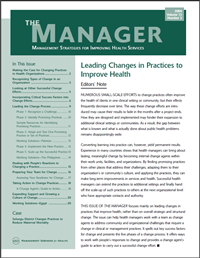
This issue of The Manager focuses mainly on leading change in practices that improve health, rather than on overall strategic and structual change. The issue can help health managers work with a team as change agents to address community and organizational challenges that require a change in clinical or management practices. It spells out key success factors for change and presents the five phases of a change process. It offers ways to work with people’s responses to change and provides a change agent’s guide to action to carry out a successful change effort.
Read More...
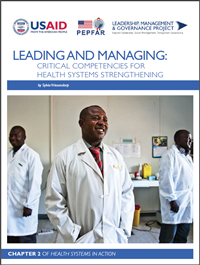
People-centered health systems cannot be strengthened without good management and leadership. This publication shows how you, as a manager of a health program or health services, can apply proven practices for managing and leading to address the challenges you face. Leadership and management skills are needed at all levels of the health system. This chapter throws light on the topic by focusing on behaviors that managers and providers can use in any setting, whether in a community health post or the national Ministry of Health.
Read More...

The eHandbook emphasizes the central, critical element of every health system: people. It shows how to build leadership and management skills for yourself and your organization. It also covers management of the specific systems essential to an overall health system – governance, human resources, finances, supply chain management, health information and association monitoring and evaluation, and health service delivery. This tool can also be accessed as individual topical chapters.
Read More...
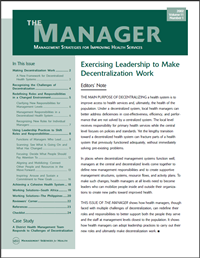
This issue of The Manager shows how health managers, though faced with multiple challenges of decentralization, can redefine their roles and responsibilities to better support both the people they serve and the staff at management levels closest to the population. It shows how health managers can adopt leadership practices to carry out their new roles and ultimately make decentralization work.
Read More...
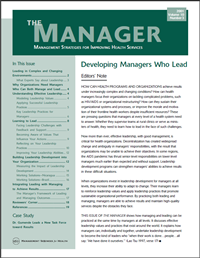
This issue of The Manager shows how managing and leading can be practiced at the same time by managers at all levels. It discusses effective leadership values and practices that exist around the world. It explains how managers can, individually and together, undertake leadership development to become the kind of leaders who “when their work is done…people…all say: ‘We have done it ourselves.’ ” (Lao Tsu 1997, verse 17)
Read More...
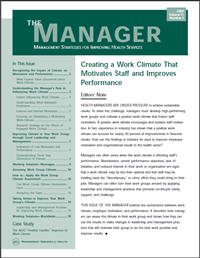
This issue of The Manager outlines the connections between work climate, employee motivation, and performance. It describes how managers can assess the climate in their work group and shows how they can use the results to make changes in leadership and management practices that will motivate their group to do the best work possible and improve results.
Read More...














